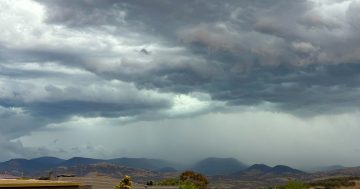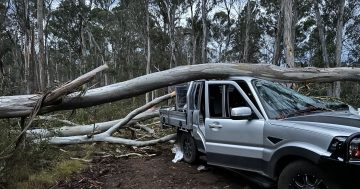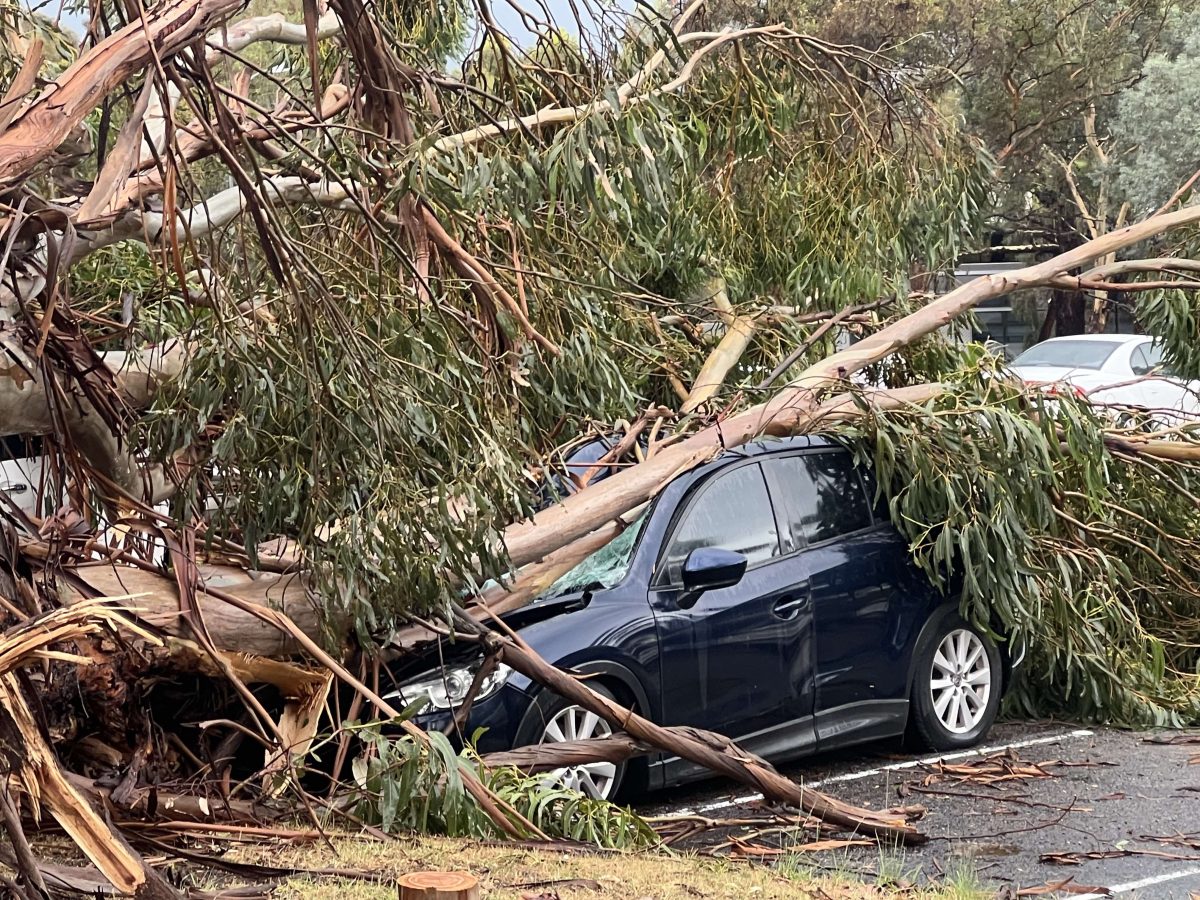
Wild winds have brought down trees and crushed several cars at Wagga’s CSU Campus. Photo: Thomas Middlemost.
Several people have been injured, trees have been uprooted, cars crushed and thousands left without power in Wagga Wagga after a violent thunderstorm swept north through the Riverina on Wednesday afternoon (15 January).
The supercell thunderstorm hit Wagga just after 2 pm lashing the city with heavy rain, hail, lightning and extreme winds that exceeded 100 km/h.
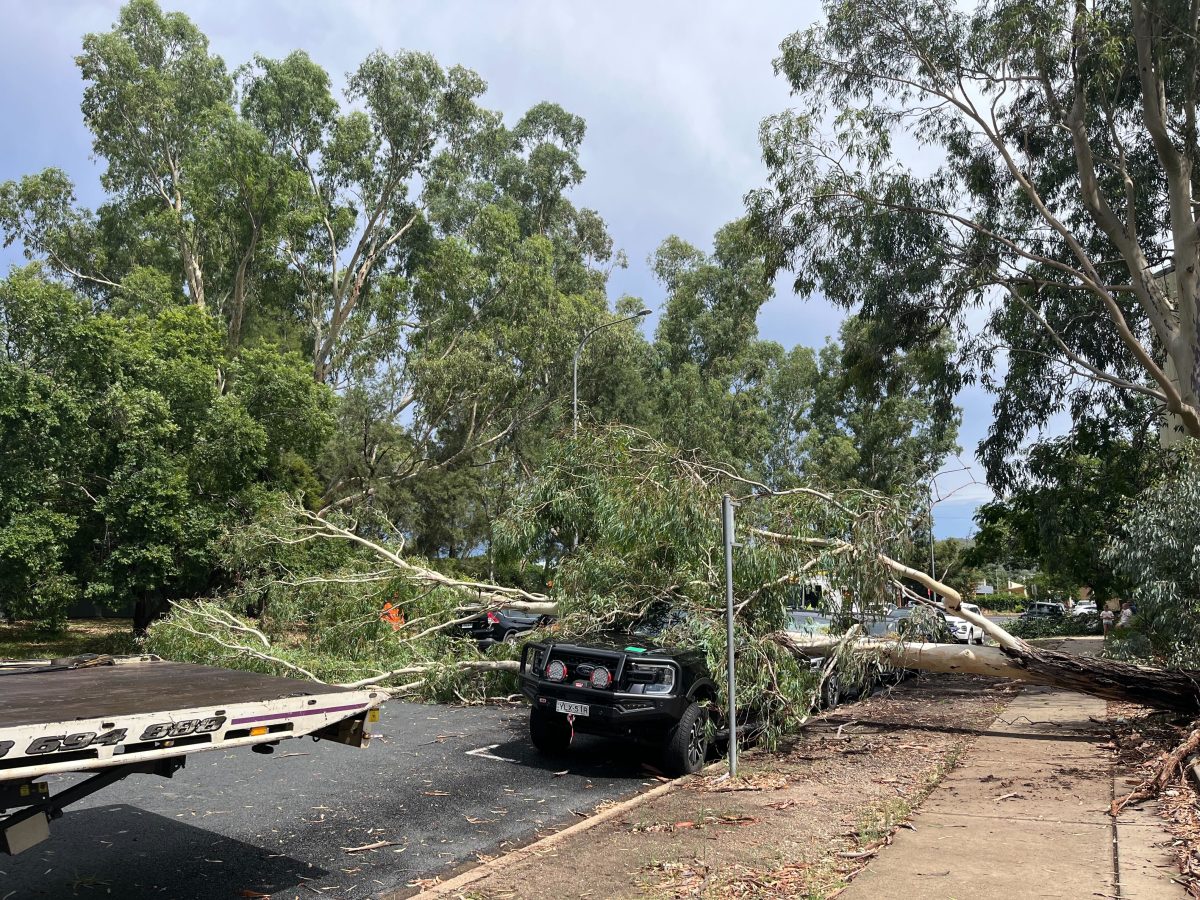
The cleanup continues in Wagga’s CBD. Photo: Kirsty Tomas.
While the storm lasted just a few minutes, it wreaked havoc across the city, uprooting trees, bringing down branches, blocking streets and causing power interruptions to thousands of homes.
At Bomen to the city’s north, four men suffered injuries when an accommodation donger was turned over by the wind. They were assessed by paramedics before being taken to Wagga Base Hospital.
As the gale-force winds ripped through the industrial estate, shipping containers stacked alongside the rail corridor were toppled and strewn across the intermodal freight hub.
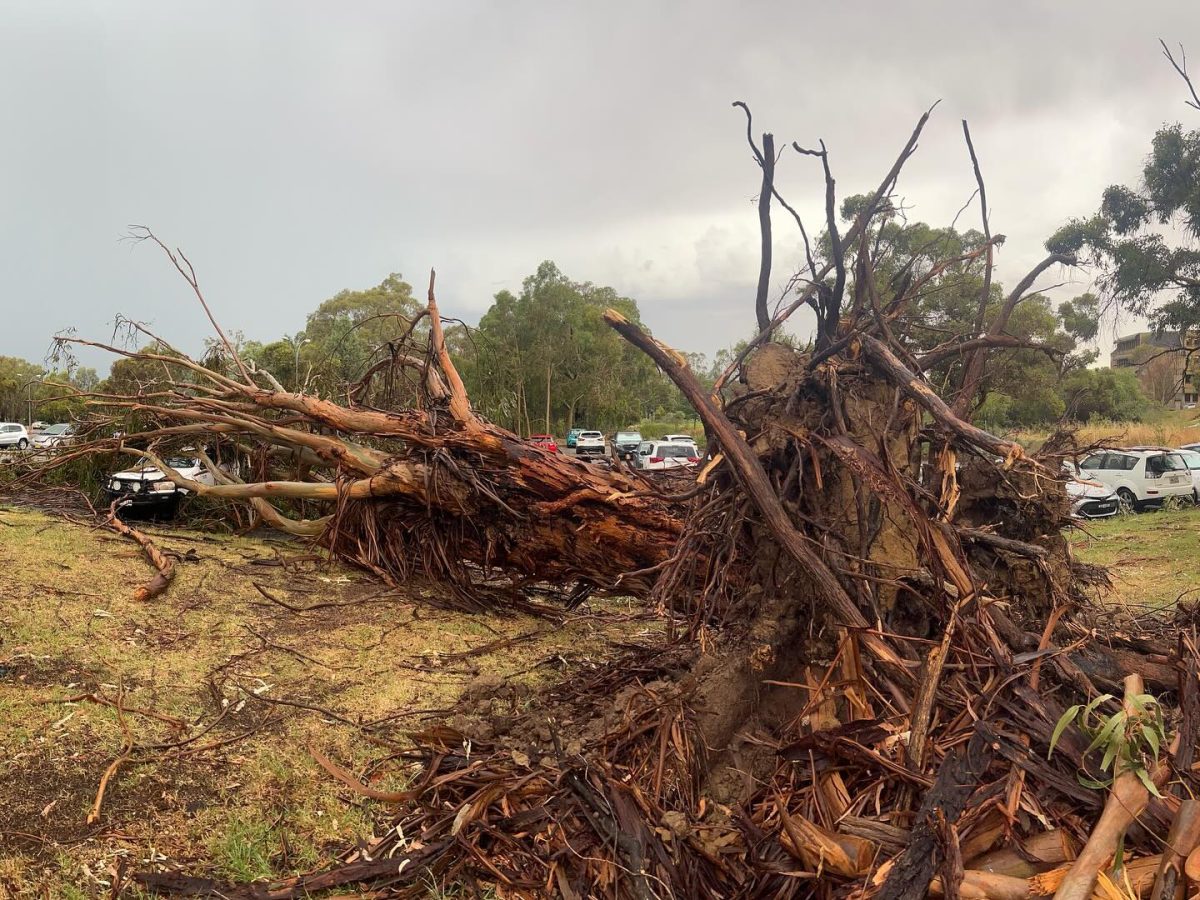
Trees have been uprooted across Wagga Wagga. Photo: Thomas Middlemost.
At Charles Sturt University, several large gums were toppled, one crushing cars and causing significant damage to nearby vehicles and infrastructure.
In North Wagga, powerlines were brought down on Hampden Avenue, and the Palm and Pawn Hotel announced on social media that the pub “had to close up temporarily due to an issue with power after the storm”.
Soon after the storm passed through, shop owners emerged to begin cleaning up on Baylis Street, where the CBD was littered with broken branches and scattered leaves.
Emergency service crews have been assessing the damage, clearing branches and fallen trees and providing assistance as required.
According to the NSW Rural Fire Service, several major roads were closed while debris was cleared including the Sturt Highway at Gumly Gumly, the Olympic Highway at Wallace Town and the Hume Highway at Tarcutta.
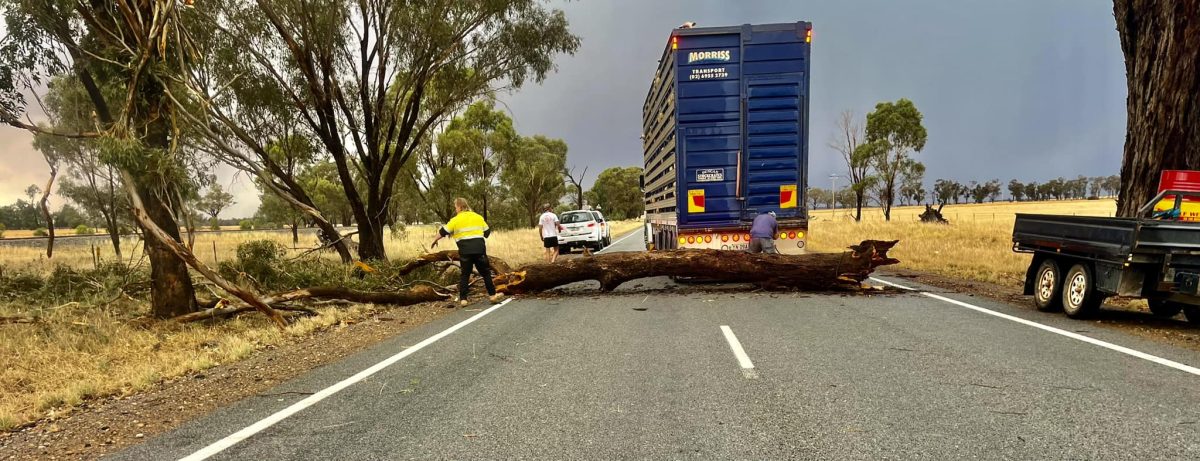
Emergency service crews have been working to reopen roads around Wagga. Photo: RFS.
Text messages from energy companies have advised that more than 4000 homes in Wagga were left without power and telecommunications service providers have warned of interruptions.
The storms are part of an upper-level pool of cold air crossing southeastern Australia and interacting with a cold front, low-pressure trough and moisture-laden air creating ideal conditions for dangerous thunderstorms.
Original Article published by Shri Gayathirie Rajen on Region Riverina.







